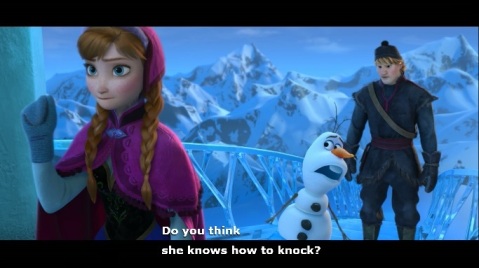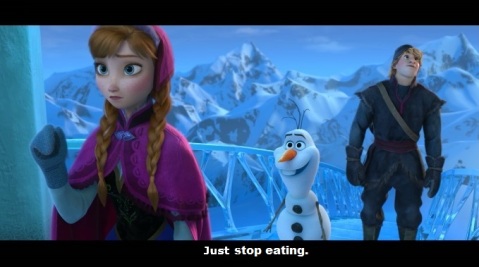WordPress is kinda getting on my nerves. I wrote this post already. Last night. I saved it as a draft because I wasn’t ready to publish it yet. This morning, I wake up and go to my site. Lo and behold, no drafts. The entire post isn’t there. So now I’m rewriting from memory. Let’s see if I can remember how I did this.
The title is a pun. I apologize to all those pun-haters out there that I have offended.
A few days ago, I watched the movie, Frozen, in Spanish because I was trying to practice my oral comprehension. Incidentally, the song, “Let it Go,” is changed to, “I’m free” [Libre Soy]. Disney spares no expenses with their translations. They translate the songs, the signs, everything. They even make sure the songs still rhyme in Spanish, all while fitting the same meter. Anyway, I watched Frozen [Congelado] and then a few days after that I had an “off day.” Some of you will recall that I have written about my mental issues in the past. Funnily enough, that post also had to do with the cold. I don’t like to make my depression or anxiety a secret, because I think they’re a part of my humanity, and I think that it’s good to remind the internet of your humanity every once in a while.
So on my “off day,” I was feeling depressed. I was stress-eating and I couldn’t stop myself. And that’s when it hit me: There is a scene in Frozen that perfectly encapsulates the nature of depression. It’s a fairly innocuous scene in context, with throwaway humor from the comic relief snowman. Take a look:




Look at the hesitation on Anna’s face, and the confusion on Olaf’s. It’s such a simple task. Olaf can’t understand what on Earth would prevent Anna from being able to knock on a door. Now comes the frustrating truth:

These two characters do not represent two different minds. Both of them exist in the same mind. Anna’s hesitation and Olaf’s confusion exist together. There’s a third character on screen, but you can ignore him.

Look at this scene with different wording. When I’m depressed, getting out of bed suddenly becomes a herculean effort.




That’s my brain. Right there. Depression in a nutshell. Oh yeah, and my stress-eating, too. It’s the exact same thing.




That’s what it feels like.
I want to say for the record that I am fine now. I had one bad day in a sea of good ones. I didn’t write (and then rewrite) this post just to make non-depressed people feel bad, or to make depressed people feel worse, or to make my family and friends worry. All I wanted to do was jump on the Explaining Mental Health Issues Bandwagon. Raising awareness is important. For those with depression, this might seem obvious and familiar. For those without it, maybe I’ve shed some light on the condition. There’s nothing much else for me to say, except of course:
It gets better!
If you have depression, do not suffer in silence. You owe yourself a chance at getting better, and remember that, thanks to the internet, the world is your support group. There’s help out there. There are people out there who understand what you’re going through. Remember not to berate yourself when you can’t knock on the door. Olaf will get through to you eventually. Take it at your own pace.
That’s all I’ve got!



